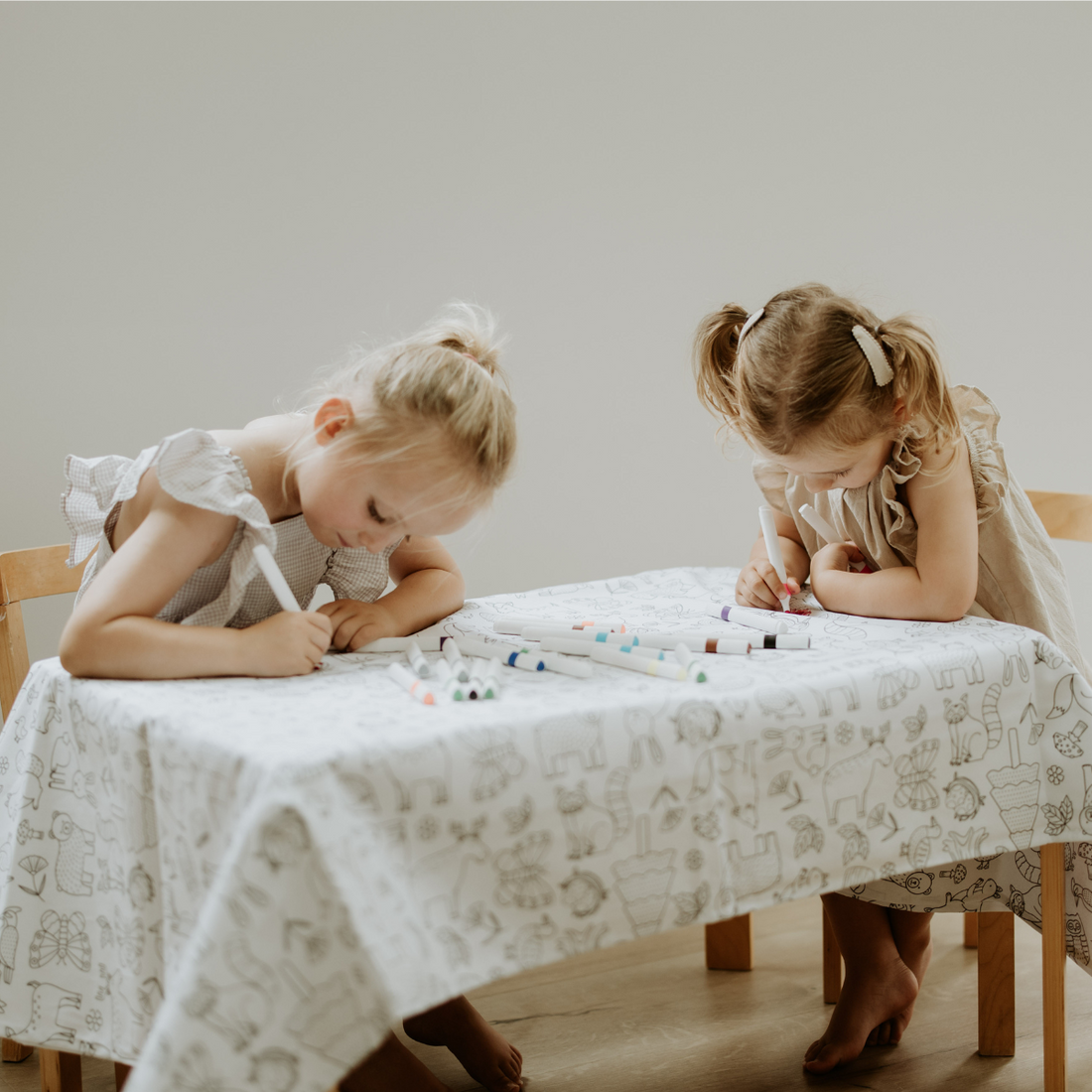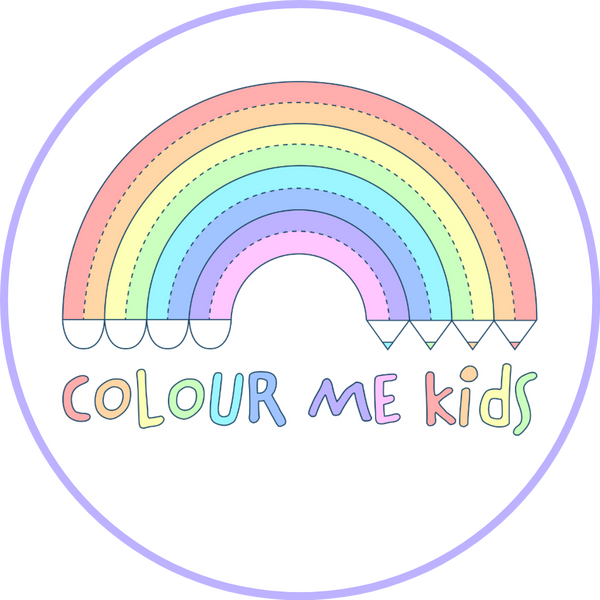
Is colouring-in good for kids? Rethinking the debate
Share
In early childhood education, there’s long been discussion, and sometimes debate, about the value of colouring-in activities. Many educators are cautious about relying too heavily on pre-drawn colouring pages, concerned that they may limit creativity and self-expression. And we completely understand why.
At Colour Me Kids, we’re passionate advocates for open-ended, imaginative play. Our own backgrounds in education have shaped the way we think about child development, creativity, and the kind of learning experiences that truly nurture young minds. That’s why we want to take a moment to share how we see colouring-in fitting into a balanced early childhood program, and why we believe it can complement, not compete with, open-ended art experiences.
Below, I've discussed the key concerns, and how colouring-in can still play a positive role when used thoughtfully.
The Concern: Colouring-In Limits Creativity
This is perhaps the most common argument. It’s based on the idea that when children colour within pre-drawn lines, they’re not generating their own ideas or expressing original thoughts. Instead, they’re working within someone else’s framework, which can feel more about “doing it right” than about creating something new.
We absolutely agree that true creativity thrives when children have opportunities to make their own marks - whether that’s free drawing, painting, sculpting, or storytelling through art. There’s nothing quite like watching a child bring their own vision to life, unbound by expectations.
How Colouring-In Can Complement Open-Ended Creativity
Rather than seeing colouring-in as a standalone creative activity, we encourage viewing it as a supportive tool within a rich learning environment. Here’s how:
A Springboard for Storytelling and Conversation
Colouring doesn’t have to be passive! Our designs, for example, are full of fun and engaging images that spark curiosity. Educators can invite children to tell stories about what’s happening in the picture, invent new characters, or imagine what might happen next. This combines structured colouring with open-ended language development and narrative skills.
A Confidence Booster for Reluctant Creators
Not every child is comfortable staring at a blank page. Some children, especially those developing confidence in their abilities, find it reassuring to have a starting point. Colouring pre-drawn images allows them to practise skills - like holding a pencil, controlling their movements, and experimenting with colour - without the pressure of coming up with a brand-new idea every time.
An Opportunity to Practise Focus, Fine Motor Skills, and Finger Strength
One of the biggest benefits of colouring-in is its contribution to fine motor development. Research consistently shows that activities like colouring-in, which involve precise hand and finger movements, help strengthen the small muscles of the hand and fingers—crucial for writing and self-help skills (Grissmer et al., 2010; Carlson et al., 2013). A 2018 study published in Early Childhood Education Journal also found that regular participation in fine motor tasks, such as colouring, cutting, and threading, was strongly linked to improved hand–eye coordination and pencil control (Dinehart & Manfra, 2013).
As children practise gripping markers, staying within lines (or choosing not to!), and making repeated small strokes, they are building the dexterity, control, and endurance needed for handwriting and other daily tasks. These types of activities also promote focus, persistence, and patience - all valuable foundational skills for school readiness.
A Calming, Regulating Activity
Many educators use colouring as part of their calm-down spaces or quiet-time routines. The repetitive nature of colouring can be incredibly soothing for young children, helping them regulate their emotions and settle their bodies after active play or big feelings.
A Platform for Learning About Patterns
In designing our reusable colouring-in products, we’ve gone beyond simple images. Many of the elements in our designs purposely include repeating patterns and motifs - a deliberate choice that provides valuable learning opportunities, especially in early maths.
Patterns are a fundamental concept in early childhood education, helping children understand sequencing, prediction, and the building blocks of mathematics. As children colour in repeating stripes, dots, or other motifs, educators can use these moments to talk about what makes a pattern, how patterns work, and even encourage children to extend or create their own patterns.
For example:
- “What colour will come next in this pattern?”
- “Can you make your own pattern with the colours you chose?”
- “Do you see any other patterns hiding in the picture?”
These simple, conversational prompts weave early maths learning naturally into creative time, reinforcing important concepts in a way that feels fun and accessible.
It’s All About Balance
We want to be clear: colouring-in should never replace open-ended art. It’s not a substitute for messy play, free drawing, or creative exploration. But, when used mindfully and alongside a variety of other creative activities, colouring-in can provide valuable developmental benefits - especially when it’s integrated with opportunities for children to extend their thinking.
For example, after colouring a woodland-themed mat, why not encourage children to draw their own woodland animals on blank paper? Or have a group discussion about different habitats and invite children to add their own elements to the scene. These types of extensions allow colouring-in to serve as a springboard for deeper learning and creativity.
Our Approach at Colour Me Kids
We’ve designed our reusable colouring-in products with care and intention. Our washable, waterproof tablecloths and placemats aren’t just about keeping kids entertained (though they’re great for that too!); they’re about supporting skill-building in a fun, low-pressure way. We’ve chosen thicker markers with triangular barrels to encourage correct pencil grip and selected images that are simple enough for young children to colour but detailed enough to prompt curiosity and conversation.
And, of course, we’re proud of our environmental focus - children can enjoy colouring again and again, washing the tablecloth clean for a fresh start each time, and using this as an opportunity for children to start learning about sustainability - reducing waste and keeping creativity flowing.
A Note to Educators
We deeply respect the incredible work educators do every day to nurture creativity, confidence, and joy in young learners. Your thoughtful, child-centred approach inspires us, and we love hearing how our products are being used in classrooms, homes, and care settings.
If you’re an educator who’s been hesitant about colouring-in, we hope this has given you some fresh ways to think about integrating it meaningfully into your program - always alongside those rich, open-ended experiences that are so vital for young children’s growth.
We’re always open to feedback, collaboration, and sharing ideas. If you have a creative way you’ve used our products in your classroom or want to chat about how they might support your curriculum, we’d love to hear from you!
We believe...
Colouring-in is just one small part of a balanced early childhood experience. On its own, it’s not a magic bullet for creativity - but when thoughtfully integrated, it can offer children valuable opportunities for skill development, calm, early maths learning through pattern recognition, and the essential development of fine motor strength and control.
At Colour Me Kids, we’re passionate about supporting educators and families to create engaging, joyful, and meaningful learning experiences, and we believe there’s room at the table (literally!) for both open-ended art and structured colouring.
References:
- Grissmer, D., Grimm, K.J., Aiyer, S.M., Murrah, W.M., & Steele, J.S. (2010). Fine motor skills and early comprehension of the world: Two new school readiness indicators. Developmental Psychology.
- Carlson, A.G., Rowe, E., & Curby, T.W. (2013). Disentangling fine motor skills’ relations to academic achievement: The relative contributions of visual-spatial integration and visual-motor coordination. Early Childhood Research Quarterly.
- Dinehart, L.H., & Manfra, L. (2013). Associations between early fine motor development and later academic achievement. Early Childhood Education Journal.






